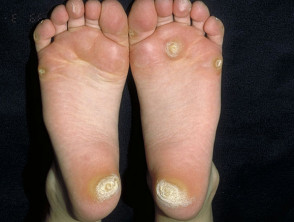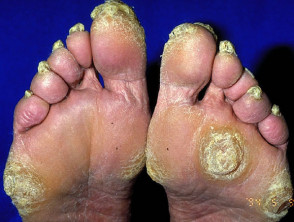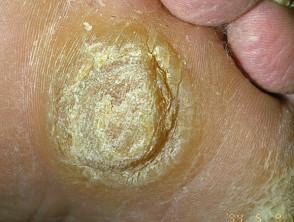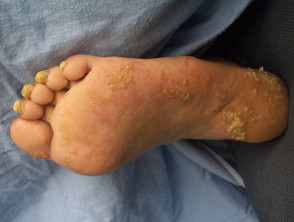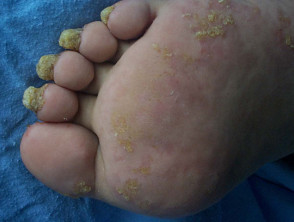What are the focal keratodermas?
Focal keratodermas are palmoplantar keratodermas (PPK) that involve only some areas of the palms or soles, usually over pressure points. Some types are associated with abnormalities in organs other than the skin.
Focal palmoplantar keratoderma (areata type)
What causes focal keratodermas?
Hereditary focal palmoplantar keratodermas are caused by a genetic abnormality. They may be inherited from one affected parent (autosomal dominant inheritance) or from both parents, who are generally unaffected (autosomal recessive inheritance). Several family members may be affected. Some types of keratoderma are associated with abnormalities of internal organs.
What are the different types of focal keratodermas?
The many different types of focal hereditary palmoplantar keratoderma look very similar. Some are associated with abnormalities of organs other than the skin.
| PPK striata/areata type Hereditary painful callosities |
|
| Howel-Evans syndrome |
|
| Richner-Hanhart syndrome |
|
| Pachyonychia congenita |
|
| Striate PPK with woolly hair and dilated cardiomyopathy |
|
Pachyonychia congenita
What is the treatment of focal hereditary keratodermas?
The following therapies soften the thickened skin and make focal keratoderma less noticeable.
- Emollients
- Keratolytic agents (eg, 6% salicylic acid in 70% propylene glycol)
- Topical retinoids
- Topical vitamin D ointment (calcipotriol)
- Oral retinoids (acitretin)
What is the prognosis?
Focal hereditary keratodermas persist for life and may be passed on to the next generation.
